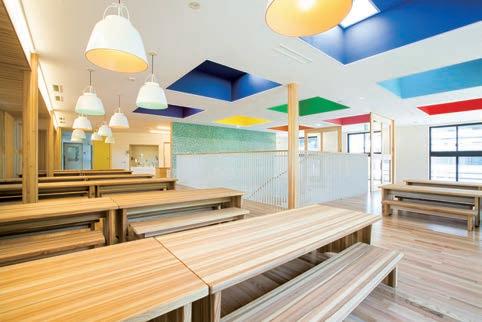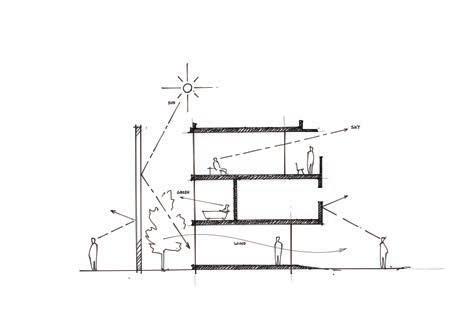
22 minute read
Pursuing Customer Satisfaction through Our Value Chain
SSOCIAL
Applying Applying big big data data

Sharing Sharing data data with with plierssup suppliers
Main ESG Themes ・・・・・・・・・・・・・・・・・・・・・・・・・・・・・・・・・・・・・・・・・・・・・・・・・・・・・・・・・・・・・・・・・・・・・・・・・・・・・・・・・・・・・・・・・・・・・・・・・・・・・・・・・・・・・・・・・・・・・・・・・・ Pursuing Customer Satisfaction through Our Value Chain
Basic concept
People these days are seeking new and different types of value in a house while housing companies are similarly looking for new ways to provide optimal value to customers. Being able to see the big picture in a complex business is necessary for maximizing customer value through the value chain. The key to accomplishing this is in the industry-leading “big data” we have been able to gather through diverse channels. The analysis of such data allows us to anticipate both customer needs and shifts in social trends. Making use of the data throughout the group and sharing it with our suppliers leads to high levels of productivity and top-drawer performance, quality, and after-sales services; it also helps to build a market in which a house is a good social asset.
Five action policies
❶Creating safety, security, comfort, and
Tangible elements refer to the top-quality products and technologies we have developed over half a century that ensure safety, security and comfort. We also pursue research on happiness—an intangible element—aiming to generate new value in such areas as health, connection, and learning.
❸Enhancing production and distribution quality
and improving operational efficiency
We combine small lot, multi-variant, and built-to-order types of production while maintaining efficient systems, and we are increasingly automating our production lines and utilizing AI and IoT to supply highprecision structural components. We are also setting up an on-premises logistics visualization system and working to achieve high efficiency and high quality in the shipment loading process.
❺Providing long-term support for customer
We offer asset management and maintenance optimized to individual customers. We provide repairs and equipment renewals, as well as remodeling for improved comfort and convenience. In addition, we are stepping up renovations that involve significant alterations and changes of purpose.
❷
As interest in ESG investment rises, we are promoting highly sustainable procurement and other practices, and working to create long-term benefits for both our company and its suppliers, as well as strengthening our collaborative relationships.
❹Strengthening our workmanship and maximizing
our construction capabilities
In producing high-precision structural components in our factories, we rely on our strengths—our more than 8,000 construction technicians, plus the close coordination we are able to achieve with Sekisui House Group companies and our partner building contractors (the Sekisui House Association). We are also actively engaged in maintaining and ensuring quality workmanship.
Customer satisfaction level 95.9%
Satisfaction has remained over 95% since FY2010. Note: Based on answers collated from a questionnaire one year after moving in, counting the top 3 of 7 choices—very satisfied/satisfied/somewhat satisfied
① Before building housing
Due to the characteristics of community-based projects, we endeavor to ensure open communication with the community and to understand changes in lifestyle needs and make home building more open to society .
Research and development
We promote research and development concerning both tangible and intangible elements that reflects valuable customer opinions and new social needs.
Model homes and tours
We collect the opinions of visitors to initiatives such as model homes that take advantage of regional characteristics, construction site tours held in cooperation with owners, and hands-on centers. ② Until the housing is completed
We create freely designed housing that responds to customer needs by making full use of the advantages of industrialized housing to secure structural safety and by utilizing our highly precise responsible construction system.
Supply chains
Production
Construction
We emphasize collaboration and cooperation with our high-quality suppliers to secure the vast amount of structural components that we use for our housing. We carry out built-to-order production using high-quality and highly precise original structural components at our factories. We ensure the stability of our highly precise construction through our construction systems, human resource development and collaboration with one of Sekisui House Group’s strongest assets, the Sekisui House Association. ③ For lasting safety, security and comfort
We extend the life of our housing by enriching after-sales support, aiming to maintain and increase housing value through remodeling and renovation.
After-sales support
Long-term warranty
Remodeling and
ション renovations The dedicated staff at our Customer Service Centers who support our customers make up 10% of all our employees. We offer an initial 30-year warranty for structural framework and any parts used to prevent rainwater leakage to ensure that our customers have a lifelong home.
We are intensifying our efforts to create long-term, high-quality assets and make effective use of resources as well as responding to a wide range of customer needs.
Action policies ①
Creating safety, security, comfort, and health by integrating tangible (technological development) and intangible elements
Flexible ß System employed for greater design freedom ▶
Expanded choice for urban houses
Activity report

Construction method to resolve urban architectural issues Since the company’s founding, Sekisui House has been creating high-quality housing that offers safety, security, and comfort through the use of advanced technologies developed through R&D initiatives addressing both tangible and intangible elements. In 2017 we developed the Flexible ß System using all of our design and technological strengths as a new method for building three- and four-story houses to meet a wide range of urban architectural needs.
The Flexible ß System employs heavy-gauge steel for the columns and beams of a structure to greatly increase design freedom and the ability to create spatial solutions. The system can now be used for detached houses, rental housing, dualuse commercial/residential buildings, and houses designed for the elderly, as well as nursery schools, hotels, hospitals, public facilities, and other non-residential buildings.
To accompany technological development, one pursuit in the area of intangibles is our happiness research. We conduct research on topics related to the feeling of being fortunate, including good health and connection to family. Sekisui House has established unique strengths through this integration of tangible technologies and intangible feelings.
One result of such endeavors has been new ideas for a non-housing business area of Sekisui House—building nursery schools. In areas with growing demand and not enough facilities, we built nursery schools, four of which won the Kids Design Award from a METI-affiliated NPO. We have been able to apply our expertise in building houses to childcare facilities, thereby supporting children’s healthy upbringing and facilitating the working lives of childcare workers, parents, and guardians. In addition, the openexterior designs help to integrate the nursery schools into their communities. Exterior of Nursery Room Berry Bear Fukagawafuyuki in Koto-ku, Tokyo

Regnum Court New Ideas for an urban house The Regnum Court brand was released in October 2019— three- and four-story steel-frame detached houses for urban settings designed using Sekisui House’s Flexible ß System. This system eliminates the through pillars to provide greater freedom in designing the layout of each floor, the size and position of windows, etc. A variety of wall and window design possibilities can provide a sense of openness while protecting privacy under a range of unique conditions. A bright, large living space can be created with large openings to bring light, breezes, and greenery into the interior space. The residents can feel nature as part of the enjoyment of their lifestyle and pursuit of their interests. These new choices are attractive even to people who might prefer living in a tower condominium. Our original super-insulating resin-aluminum composite sash (SAJ sash) provides higher performance than ordinary resinaluminum composite window sash, while the entire house itself is highly insulated and compliant with Japan’s Net Zero Energy House (ZEH) standards.
Backing the emergence of Regnum Court is Sekisui House’s happiness research. The concepts used in Regnum (which means “kingdom” in Latin) grew out of this research as ideas for an affluent population and people who take special care in designing their living environment. The completion of a well-designed house on a land site that offers one-of-akind views in which you have family connection and can enjoy getting together with friends—that kind of place we see as a kingdom, which is the basis upon which Regnum Court was developed.

Regnum Court’s large living area integrates interior and exterior for a restful, open feeling

Action policies ②
New form of CSR evaluation ▶
From CSR procurement ahead to SDG-based procurement
Activity report
From reviewing CSR evaluations to SDG-based (sustainable) procurement To encourage our suppliers in their socially responsible efforts, we carried out CSR evaluations using a check-sheet method in FY2017 and FY2018. In FY2018 we established CSR Procurement Guidelines and required suppliers to submit a consent form to ensure that they agreed with the intent of the guidelines in an effort to reappraise and establish our sustainable procurement strategy going forward.
Following our signing of the United Nations Global Compact in 2018, Sekisui House joined the Supply Chain Working Group of the Global Compact Network Japan (GCNJ). In FY2019, we switched from using an in-house CSR assessment check sheet to carrying out evaluations based on the standards set forth in the more comprehensive GCNJ SelfAssessment Questionnaire (GCNJ SAQ * ). The questionnaire has nine categories of procurement standards with items not covered by the previously used check sheet, including corporate governance and supply chain questions.
In February 2020, we reorganized the former Materials Department into the Procurement Department, and significantly changed the organizational structure involved in production and procurement.
Through such actions, we are making the shift from procurement methods of the past to an active participation in the supply chain (SDG-based procurement) to work toward building a sustainable society.
* SAQ: The Self-Assessment Questionnaire is a self-diagnosis tool that a company uses for analyzing its actions.
GCNJ SAQ themes and topics (from CSR Procurement Guidelines)
1
Theme
Corporate governance
2 Human rights
3 Labor
4 Environment
5 Fair business practices
6
7 Quality and safety
Information security
Topic
Compliance with laws and regulations; Establishment of a CSR promotion system; Establishment of internal controls; Establishment of a business continuity planning (BCP) system; Establishment of a whistle-blower system; Dispatch of CSR-related information inside and outside the company Basic attitude; Respect for human rights and prohibition of discrimination; Avoidance of complicity in (or contribution to) human rights abuses; Respect for indigenous peoples and local communities Basic attitude; Prohibition of discrimination in the workplace; Provision of equal opportunities to employees regarding human resources development; Prohibition of inhumane treatment; Payment of fair wages; Fair application of working hours; Prohibition of forced labor; Prohibition of child labor; Respect for the religious traditions and customs of the country of operation; Recognition of and respect for freedom of association and the right to collective bargaining; Proper management of employee safety and health Basic attitude; Management of chemical substances; Control and reduction of waste water, sludge and air emissions; Sustainable and efficient utilization of resources (energy, water, raw materials, etc.); Reduction of GHG (greenhouse gases); Identification, management, reduction, and responsible disposal or recycling of waste; Initiatives related to biodiversity Basic attitude; Establishment of appropriate relationships with governments and public officials in countries where business activities are conducted; Prevention of the giving and receiving of improper advantages with customers and trade partners; Prevention of competition law violations; Rejection of relationships with antisocial forces/organizations; Prevention of unauthorized use of intellectual property and of illegal reproduction of copyrighted works; Services for responding to complaints from outside the company and for consultations; Prohibition of insider trading; Prohibition of acts with conflicting interests; Import and export control Basic attitude; Ensuring product and service quality and safety; Appropriate response to product and service accidents and the circulation of defective goods Basic attitude; Defense against attacks on computer networks; Protection of personal data and privacy; Prevention of misuse of confidential information Basic attitude; Use of raw materials not involved in conflict or crime (initiatives against conflict minerals) Initiatives to reduce negative effects on local communities; Initiatives with local communities toward sustainable development Monitoring and due diligence to verify evaluations
We conduct monitoring of suppliers flagged by the results of the CSR evaluation through on-site interviews (to provide advice on evaluation standards and how to meet the standards). In FY2019 we conducted such on-site interviews for three suppliers.
Another area of increasing importance to us is related to climate change—reducing CO 2 emissions in the production processes within the supply chain. We are therefore using the SAQ and other tools in a steady effort to achieve those reductions.
Additionally, as a construction company that uses a high volume of lumber, we recognize the particular need for rigorous participation in the procurement of large trees where infringement risks are high, so we conduct due diligence targeting approximately 50 companies that are major wood material suppliers. As necessary, we also conduct on-site inspections of logging areas at overseas producers upstream from our suppliers. (For further information, see page 26.)
How supplier evaluation works
Reevaluate
CSR evaluation
Verify evaluation
Supplier Monitoring / subcommittee Due diligence on wood Extend/Promote

CSR supplier subcommittee seminars held to extend and promote SDG procurement In the construction industry, which has so many small and medium-sized suppliers, we realize that building a sustainable supply chain involves more than simply a one-way evaluation of adherence to guidelines. It is indispensable to educate suppliers and provide advice.
For that purpose, in 2018 we set up a CSR supplier subcommittee under the CSR committee to conduct training on the importance of ESG management and related matters. We obtain the agreement of suppliers to ensure the effectiveness of the SAQ in supporting a sustainable supply chain. In FY2019 training seminars were expanded to the partner companies of our factories in addition Supplier subcommittee seminar held to to approximately 150 promote understanding of CSR efforts suppliers. and SDG procurement
Action policies ③
Enhancing production and distribution quality and improving operational efficiency
Utilizing AI, IoT and big data ▶
Improved production efficiency and reformed workstyles
Activity report
Semi-automating combined processes to boost production efficiency Sekisui House commits resources to making labor-saving improvements to our facilities in order to boost productivity while maintaining high quality. We had already improved the processes that combine multiple building components at the factory in advance to improve work efficiency at construction sites, but in 2019 we began looking into building semiautomated lines. We are making significant improvements to labor-intensive processes such as combining wall frameworks with exterior walls and window sashes, for example, or attaching metal fittings to columns and beams to build a wood-frame house.
We continue to automate all of our Japan-based factories and have already introduced a total of 540 robots to perform handling, welding, and other functions. We are also rolling out smart systems that take advantage of AI, IoT, and big data. We plan to utilize the data obtained from these facility improvements to further expand our semi-automated lines. In-factory logistics visualization system improved by sharing component flow information At our Shizuoka Factory we built the “Jobca” logistics visualization system, which has improved efficiency, quality, and response timeliness of loading work from manufacturing to shipping. Prior to implementation of the system, paper was used to confirm information—numbers of components manufactured at the factory and components supplied to the factory, or compiled data on delivered product by type. The introduction of a more streamlined system that employs PCs, iPads, and 2D barcodes that leverage IoT tech has greatly lightened the load for workers and reduced losses, while enabling high-efficiency, high-quality loading work.
In addition, the utilization of cumulative data has sped up the Plan-Do-Check-Act cycle, which has contributed to significant reductions in truck waiting times at factories. As a result, a number of improvements were made—about 170 person-hours per month cut, the number of trucks waiting over two hours at a factory cut to zero, 90% of errors in loading eliminated, more jobs standardized to allow anyone to do them, and overtime hours reduced. The system is now starting to be implemented in other factories. Boosting production efficiency with AI technology On the production line of our Bellburn ceramic exterior wall panels we introduced a quality management system that employs image-processing-specific AI technology. The system enables the management of conforming output in real time, which has resulted in higher production efficiency, better quality management, and reduced inventory.
We have also introduced a smart system that makes excellent use of IoT, big data, and AI in the steel beam production lines of our ß System, a construction method for three- to four-story steel-frame houses. This smart system makes it possible to automate adjustments to our production volume and work scheduling that previously required the expertise of supervisors. The system has also increased operational efficiency
and contributed to power savings.
Manufacturing Before Jobca: information shared on ledgers
Frames ß beams Isolated columns After Jobca: paperless
Frames ß beams Isolated columns
Ledger copying 2–3 times per day
Shipment management cards 100 per day
Loading Logistics center
FAX
Jobca database Logistics center
Improvement of component flow information sharing through Jobca AI-based quality management system for Bellburn earthenware wall panels

Strengthened production of original exterior-wall components Dyne Concrete, a component of our highest quality lightweight steel-frame “IS Series” two-story housing product and the Bellburn ceramic exterior walls on our SHAWOOD woodframe detached homes are original exterior-wall components produced by Sekisui House. These components are unique in that they are beautifully designed as well as water resistant, weather resistant, and highly durable. We are planning to incorporate AI and other cutting-edge technologies, automate the production line, and strengthen system development to further boost manufacturing yield and improve quality.
Improving the work environment at production factories We carry out essential health and safety management at each of our factories in an effort to prevent accidents or health problems that might occur during work operations. We work to assure the safety and health of our employees, and endeavor to create a comfortable work environment, facilitate smooth work, and improve productivity. Health and Safety Committee meetings are held once a month, along with quarterly Production Department Health and Safety Promotion Council meetings, at all factories, to share information regarding the current condition of each factory, specific areas for improvement, and our vision for the future.
Action policies ④
Diverse strengths as a group ▶
Improving on-site productivity through physical resources, systems, and people
Activity report
Cooperation with the Sekisui House Association The Sekisui House Association, made up of the 17 Sekiwa Construction companies and partner building contractors, cooperates with Sekisui House business offices to pursue a range of initiatives including efforts to improve construction quality, implement safety measures, beautify work sites, foster human resources, and improve work environments.
In 2019 Japan was hit by several natural disasters, including torrential rains in northern Kyushu in August, Typhoon Faxai (No. 15) in September, Typhoon Hagibis (No. 19) in October, and subsequent heavy rainfall events. After such natural disasters, we are able to take advantage of our Japan-wide network to assist with restoration and reconstruction work by having local Sekisui House Association branches send large numbers of technicians to the disasterstricken area as needed. We are responding to the increasing demand for construction by working to ensure ongoing, reliable workmanship and using our group network to the fullest.
Working to improve work site productivity One in three construction industry workers in Japan is 55 years of age or older, and ages are rising overall. The total number of construction workers is on the decline, and how to get and train new workers, and how to improve retention rates are key issues for the industry as a whole.
The same decline is happening within the Sekisui House Group, so we are working to ensure ongoing, reliable construction management by strengthening both our technologies and our alliances with partner building contractors, while also taking steps to make the most of our existing construction capabilities. We have launched two sets of working groups—one to focus on solutions employing physical resources and the other to focus on solutions involving systems and people—to improve productivity and reduce person-hours.
We have organized a Technical Directors’ Council, Construction Management Committee, and Work Site Productivity Improvement Working Group, consisting of technical deputy directors representing locations around the country, the head office, and factories. These bodies are identifying and exploring areas for productivity improvement, such as the AS Balcony, which leads to labor savings in construction by employing an integrated aluminum floor for waterproof construction, and the “ß Thermal Insulation Material Search App” that speeds up searches for construction materials using an iPad.
In August 2019 we established the House Association–Sekiwa Construction Factory and Construction Committee to discuss, review, and provide feedback in response to construction site improvement requests submitted by the Sekisui House Association and Sekiwa Construction.
Our slogan for these work site productivity improvement efforts is: “Let’s work as a team to steadily increase the number of houses that can be built annually.” These efforts, which pool the resources of the entire company, are leading to reliable and proper construction of houses for our customers.
ß Thermal Insulation Material Search App, a “systems and people” solution

AS Balcony, a “physical resources” solution
Technical training center opened in Hanoi to prepare for hiring skilled workers from Vietnam In preparation for an anticipated shortage of labor in construction, at Sekisui House we are promoting measures that include rebuilding our construction worker database and getting recruitment support from partner building contractors.
Also, to further ensure our construction capabilities, we have begun a full-scale effort to take on technical trainees from Vietnam based on a policy of promoting diversity. In November 2019 we became the first housing manufacturer in Japan to establish a technical training center in another country with our facility in Hanoi. Explanatory meetings for families, training fees, and other expenses are all covered by Sekisui House and a supportive atmosphere is created so that technical trainees can come to Japan without any concerns. Prior to coming to Japan, the trainees learn Sekisui House’s construction methods (foundation, exterior frame, interior finishing) and the company’s philosophy so that they can start training when they arrive in Japan without any problems.
We also provide active support to Sekiwa Construction and our partner building contractors who take on the trainees. By 2022 we plan to employ close to 300 Vietnamese workers.
Technical training center in Hanoi, Vietnam (exterior)


Action policies ⑤
Providing long-term support for customer lifestyles and maintaining and improving housing property value
Support and renovation based on advanced technologies ▶
Ensuring customer satisfaction and building a market for quality housing stock
Activity report
Enhancing our initial 30-year warranty program, U-trus System, and housing history information database Ie-Log
Sekisui House offers an initial 30-year warranty program (for contracts signed starting April 1, 2018) that covers the structural framework and any parts used to prevent rainwater leakage. This program provides 20 years of warranty on top of the 10-year defect liability period required under the Housing Quality Assurance Act. In addition, all other parts are under warranty for a specified period of time. Even after the warranty period has expired, homeowners can take
Highlights
Promoting SumStock together as a group
proposals. Our Customer Service Centers and group companies work together to further expand the number of houses in the SumStock system. Smart Inspection system allows remote appraisals During periodic inspections, high-resolution images are supplied by a drone, underfloor inspection robot, and attic inspection robotic camera. The images are uploaded to the cloud and dedicated staff on standby at our office support desk can quickly determine if any defects exist. This new type of inspection system for detached homes that we have dubbed “Smart Inspection,” went online in August 2019. It will be rolled out at 29 Customer Service Centers across the country one by one.
The equipment can easily be controlled remotely by smartphone or tablet from any location. Because an inspector does not have to climb to a dangerous height or crawl under floors, the system improves the work environment for our employees. This means that inspection work can be done by women or seniors, expanding work opportunities in a way that will help mitigate the construction industry problem of labor shortages and an aging workforce. advantage of our unique U-trus System to extend warranties in 10-year intervals.
We also operate Ie-Log , a database that shares digital information concerning the various building components of each property and other data. This is based on the LongLife Quality Housing Certification Program in Japan, which aims to build up a stock of high-quality housing that can be used in the long term. Group companies utilize the historical data accumulated through Ie-Log to propose remodeling and
SumStock is a new circulation system aimed at invigorating the market for high-quality existing housing stock. It is run by the Provision of Quality Housing Stock Association, a general incorporated association comprised of 10 major housing manufacturers including Sekisui House, and is chaired by Sekisui’s current chairman, Toshinori Abe. The circulation system is an integrated system for its members that covers all steps from value appraisal to certification through to resale. The Sekisui House Group is also using Ie-Log , our proprietary housing history database to actively promote SumStock renovations.
Renovation upon owners
moving in
Consultation Sekisui House
to sell house
Periodic inspections Customer Service Centers Sekisui House Remodeling companies
Sales information SumStock Appraisals/Mediation
Sekisui House Real Estate companies
Regular checks
Semi-automatically controlled drone


Family Suite Renovation New living proposals for existing houses Our Family Suite concept for newly built houses proposed a new mode of living. Family Suite Renovation is a system begun in September 2019 that is adapted for existing houses. Many of the existing houses we have built use a lightweight steel frame. Our newly developed RF Support Beam System allows structural columns to be removed to renovate a house by converting compactly partitioned areas into a large living room space. In so doing, the asset value of the house is maintained and improved.

RF Support Beam structure illustration
Life Step System gives back to customers With the aim of extending the longevity of a house by providing extended after-sales support, we have been able to increase our contact with a large number of owners, and this leads to the building of a solid client base.
Including renovation work done since February 2019, for every interaction with the Sekisui House Group, a homeowner earns a number of “steps” and is issued “Life Step System tickets” that can be used, when a certain number are accumulated, for renovation discounts or in other ways.










